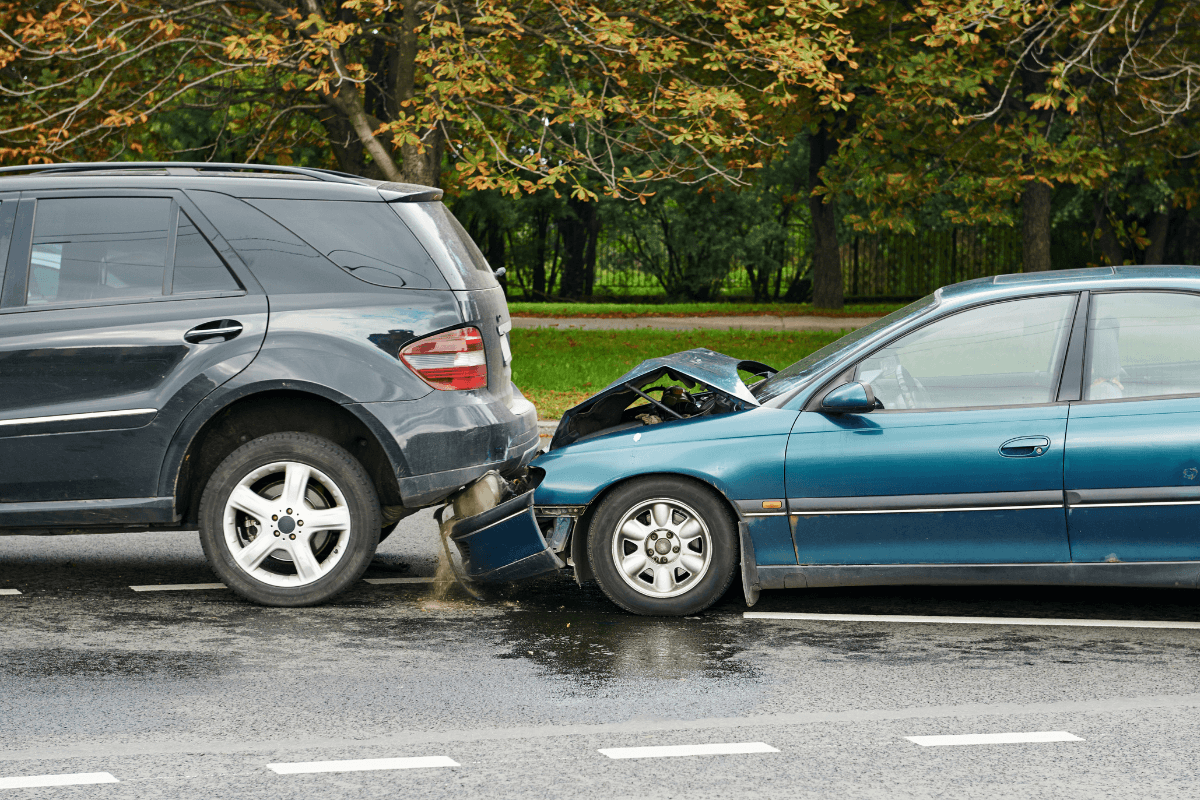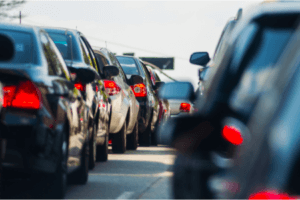Fault in a Rear-End Accident: Understanding Negligence in California

In most rear-end collisions, the rear driver is presumed to be the negligent party. This is because in most rear-end collisions the crash is caused by the negligence of the rear driver.
For example:
- driving too fast for the speed limit or;
- driving while distracted and hit the driver in front.
Whether the rear driver was speeding, tailgating, driving while texting, or operating a faulty vehicle (for example, poor brakes), the rear driver is likely the negligent driver.
However, this is not always the case.
California has specific rules to prevent rear-end collisions. In a small number of cases, liability is assigned to the front driver. This includes illegal brake checking, u-turn accidents, and safe distance related crashes.
Brake Checking: California Vehicle Code Section 22350
Under California Vehicle Code Section 22350, drivers must maintain a reasonable driving speed. Therefore, when a trailing car is driving too fast and collides with a car in front of them, the rear driver will likely be liable for excessive speed. However, speed goes both ways. A front driver that drops their speed dramatically by slamming on their brakes may also potentially be liable for a rear-end collision.
A front driver that drops their speed dramatically by slamming on their brakes may also potentially be liable for a rear-end collision.
Although the front driver may have a good reason to dramatically decrease their speed by applying their brakes, the act of brake-checking (intentionally applying brakes to promote distance between the front and rear driver) is not protected by law. It can be a dangerous practice causing liability for the brake-checking front driver.
U-Turn Rear End Collisions: California Vehicle Code Section 22100.5

Safe Distance-Related Collisions (“Tailgating”): California Vehicle Code Section 21703

Many traffic safety experts and attorneys suggest maintaining at least a two-car length distance away from the front car whenever possible. So long as maintaining this distance does not place other automobiles in the rear at risk of collision (dramatically decreasing speed to achieve this distance), a driver will likely comply with the law.
Nearly all rear-end traffic collision cases revolve around a theory that one or more drivers involved in the accident were negligent. However, proving negligence is much more complicated than presenting evidence of a crash.
 Contact the Rear End Accident Lawyers Curtis Legal Group and Schedule a Free Consultation Today
Contact the Rear End Accident Lawyers Curtis Legal Group and Schedule a Free Consultation Today
The car accident accident attorneys at Curtis Legal Group know just how difficult the fallout of a car accident can be when you’ve been injured. When a rear end accident injures you or someone you love, our legal team will aggressively fight for you and will help guide you through a whiplash claim. Contact us to begin your case investigation today.

 Contact the Rear End Accident Lawyers Curtis Legal Group and Schedule a Free Consultation Today
Contact the Rear End Accident Lawyers Curtis Legal Group and Schedule a Free Consultation Today